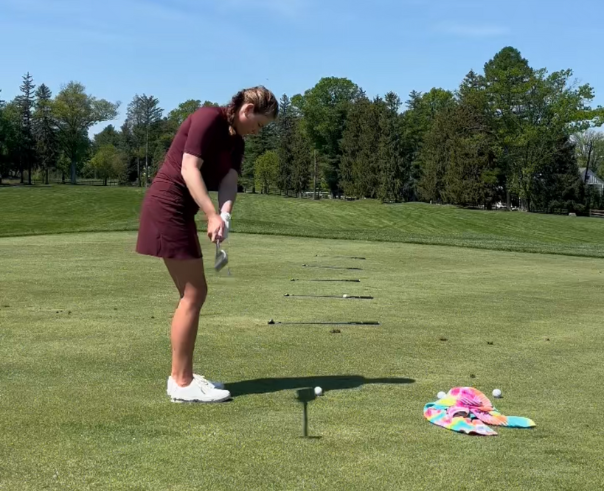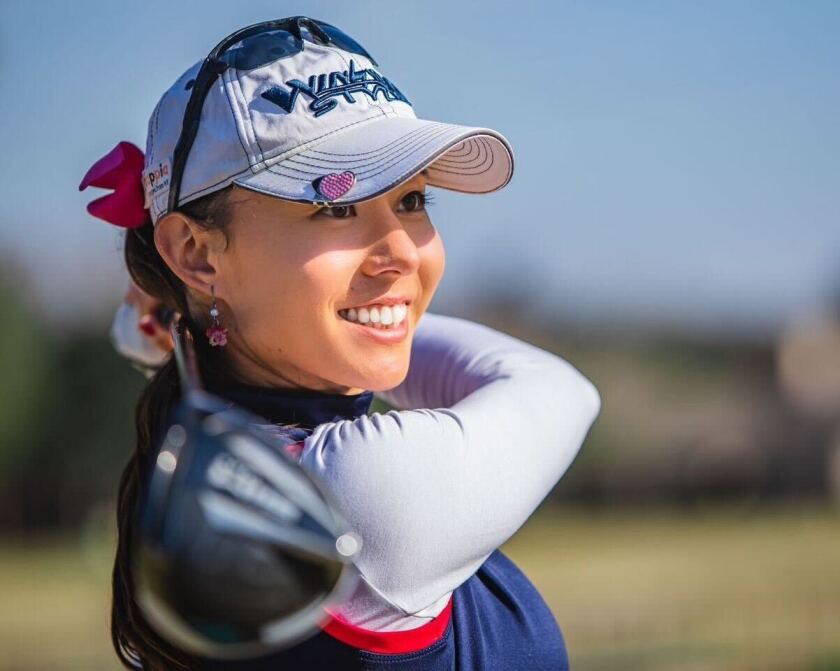What is the importance of knowing your yardages?
Knowing how far your ball carries in the air and the total roll-out of each golf club can become crucial when planning your approach shot or even rolling a putt close.
Controlling your distance is most likely more important than gaining distance. It’s not how far it can go, but how far it will go…
One way to home in on your distances is by doing a Bag Mapping, or a process where you determine how far you hit each golf club. This includes using launch monitor technology, like Trackman, to gather an average distance of about 5 shots with each club. You can even make a chart on your phone or on a piece of paper for you to reference on carry and total distance with each club.
Side note: carry distance is how far you hit the golf ball in the air with a certain golf club; total distance is how far the golf ball goes in the air and how far it rolls out after it lands.
How Can I Find Out My Distances Without a Trackman?
If you don’t have access to a Trackman, you can follow these different steps:
- Step off yardages and place a club or towel at 10-yard intervals and measure from there.
- Go to places like Golftec, Five Iron Golf or Topgolf and use their technology to obtain data as well
- Pay attention when you play: If you play and hit a solid golf shot, you can measure how far that shot went and start to collect data that way.
Use Your Bag Mapping Knowledge to Your Advantage
Knowing your distances can lead to better course management and more opportunities, specifically with back, middle, and front pins.
Think about a flag positioned at the back of a green. The total distance to the hole is 100 yards. If you know you carry your 9-iron 100 yards in the air, and it rolls out 110 yards, you can eliminate the possibility of hitting the ball over the green by hitting a pitching wedge (PW) instead. Knowing each club’s average will help prevent big misses like short-siding yourself or hitting over the green.
The same would go for a flag placed on the front of a green. If the hole is 100 yards away, the front edge of the green is 94 yards and you hit your PW 90 yards in the air and roll it out to 100, you would have to hit the shot perfectly for it to maybe land on the green and roll out to the hole versus hitting the front collar of the green and stopping short. The 9-iron may be a better play since it carries 100 yards in the air and will roll 10 yards past the pin. Therefore, if the shot is miss-hit at all, the ball still has a chance to get on the putting surface.
Without knowing how far the ball carries and rolls out, you’re making your golf club selection much more difficult for yourself and forfeiting strokes.
Use This Distance Control Golf Drill
Distance control will apply to every part of your game, from full swing to short shots to putting.
Use this Ladders golf drill to improve your distance control with any club. The goal of this drill is to build a ladder. Let’s start with a wedge:
- Start by hitting your first shot as short as possible in the air. For example, it carries 5 yards in the air.
- The next shot you hit should carry 5.1 or more yards in the air.
- The goal is to continue to hit shots further than the previous shot, hitting as many as you can in a row.
- If your next shot lands short of the previous carry distance you start over.
- You can do this in the reverse as well.
Distance control gets even more important as the golf swing becomes shorter. Pitching and chipping is dependent on being able to carry the ball a certain distance and let it roll to the hole.
We could spend a whole day talking about distance control in the short game – it’s important to remember distance trumps direction in this discipline.
With drills like this and some bag mapping prep work before the start of each season, you can make a big impact on your score and save yourself from silly mistakes on the golf course.



